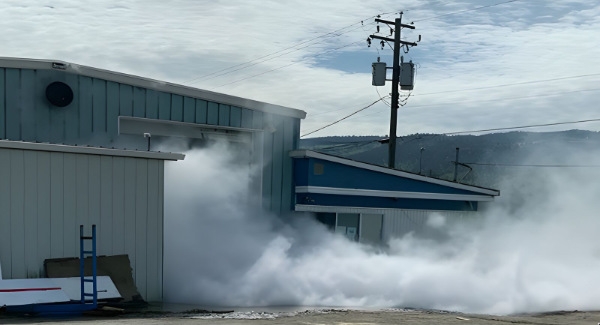Injuries
Annual State of Safety 2022
State of Safety: Injuries
The number of injuries reported to us in a given year provides an important indicator of the impacts of the hazards inherent in regulated equipment. Together with industry, our goal is to minimize incidents and injuries by identifying, understanding, and reducing risk across the safety system.
Please note that Technical Safety BC receives its injury reports and descriptions from operators or first responders at the time of, or immediately following, the incident. Injuries reports are based on evidence available during investigation and any long-term effects of an injury are not reflected in the statistics.
4
Fatal injuries in 2022
20%
Increase of injuries
12
Injuries rated as major
Fatal Injuries in 2022
Two incidents involving fatalities related to electrical equipment and ammonia were investigated in 2022.
A maintenance worker at a commercial nursery received a fatal injury while attempting to repair a domestic consumer microwave oven. Our investigation found that the worker had been working on the microwave while it was energized and the outer cover was removed. The worker came into contact with exposed, energized high voltage components within the microwave and received a sustained high voltage electrocution of up to 3,700 Volts.
The worker did not hold any qualifications or certifications as an appliance service technician or electrician which may have led to an incomplete understanding of the high voltage hazards produced by the microwave's components. Several documented cases were identified of “fatal” and “severe” injuries from exposure and improper use of consumer microwave high voltage components.
An independent engineer report was produced detailing the functionality of various components within a microwave oven, identification of hazards associated with those components, and how the hazards might lead to harm through electric shock. The findings of the investigation and engineering report will be used for education and prevention initiatives to help improve safety and awareness of high voltage electrical hazards.
In an ammonia release incident, a contractor received a fatal injury disassembling ammonia refrigeration equipment. A large amount of ammonia was rapidly released from the system as a valve opened. Our investigation found that a misunderstanding of the amount of ammonia that was contained within the system was a result of changes in ownership, unclear communication, and incorrect assessments.
The investigation has generated recommendations for safety improvements aimed towards owners and managers of refrigeration systems, persons who hold or held technical qualifications, and the Canadian Standards Association.

Injury Categories
| Fatal | An injury causing death. |
| Insignificant | An incident that resulted with insignificant and/or insignificant equipment damage |
| Major | An injury where residual effects are likely to significantly affect long-term quality of life. |
| Moderate | An injury where residual effects are unlikely to significantly affect long-term quality of life. E.g., temporary loss of consciousness, fractures, concussions. |
| Minor | An injury where there are typically no residual effects and recovery is expected. E.g., bruises, cuts, minor disorientation (confusion). |
| Insignificant | An injury where there are typically no residual effects and full recovery is expected. E.g., temporary pain and discomfort. |
Major Injuries
Of the closed investigations, 12 injuries were ranked as “major” in 2022. These included:
Gas-Related Injury
One incident involved a propane gas explosion at a residential home. The incident happened during a time of extreme cold weather. The occupant was using propane fueled heaters in the home and was storing propane cylinders inside. A propane leak occurred while propane cylinders were being changed over for a heater. The escaping gas ignited causing an explosion resulting in burns to the occupants’ hands, arms, upper torso, and face.
Electrical-Related Injury
A worker was repairing a leaking roof on a building at a large industrial facility. The building housed several exposed high voltage components up to 13,000 volts. The worker entered the access restricted building and while on a ladder, contacted an exposed high voltage busbar and received an electrical shock and burns to their arm.
Passenger Ropeways-Related Injury
A child fell 7.5 meters from a ski lift carrier. There were four children on the carrier and the restraining bar was lifted when the chair approached the final tower before the unloading station. The lift was stopped for an unrelated event and when it was restarted, the child fell from the carrier which resulted in a loss of consciousness, a bruised lung, and two broken elbows. Read more.
Injury Data
You Might Be Interested In
Building Confidence
We identify risks and increase safety by investigating and auditing companies without proper licenses and qualifications.
Learn MoreA Safer BC
Gas Line Safety, Climate Action and our Licensed Contractor Program
Learn MoreSafety Engagement
We provide technical training and education to support our partners. We also work to influence people in the safety system to make safety-minded decisions.
Learn More